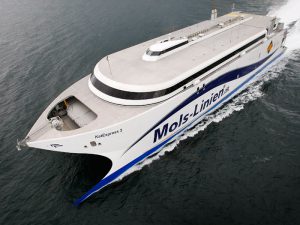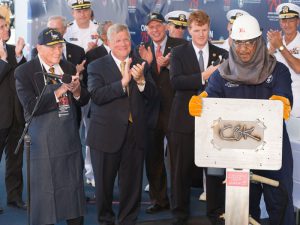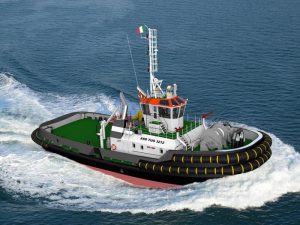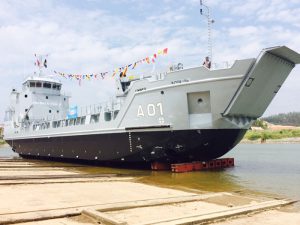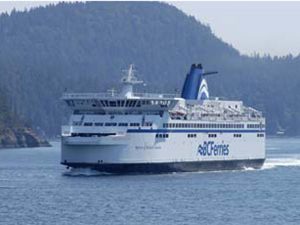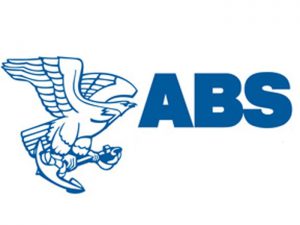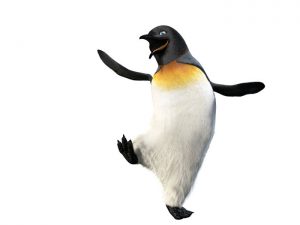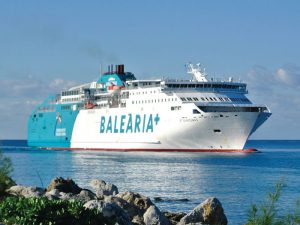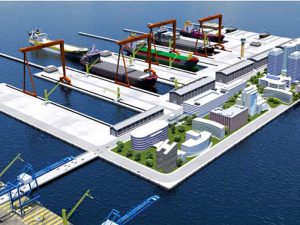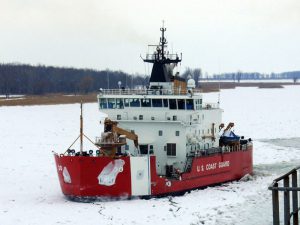
Senators seek robust funding for new Lakes icebreaker
The letter was also signed by Senators Tammy Baldwin (WI), Amy Klobuchar (MN), Al Franken (MN), Bob Casey (PA), Joe Donnelly (IN) and Sherrod Brown (OH).
Heavy ice cover seen in recent winters has seriously impaired commercial shipping and economic activity in the Great Lakes. Last winter, cargo shipping decreased by 3.2 million tons, costing $355 million in lost revenue and nearly 2,000 jobs.
“Heavy ice cover disrupts shipping and commerce on the Great Lakes, resulting in a severe loss of economic activity, revenue and jobs that depresses both the regional and national economy,” wrote the Senators in the letter. “It is essential that Congress provides the men and women of the Coast Guard with the resources they need to keep open shipping lanes in the Great Lakes and to conduct search and rescue missions to keep ships and their crews safe during winter’s cruelest months.”
The U.S. Coast Guard currently operates nine icebreaking-capable cutters on the Great Lakes, some of which date back to the 1970s.
With only one heavy icebreaker in the Great Lakes fleet, the USCGC Mackinaw (WLBB-30), the Coast Guard has struggled to combat near record-breaking ice cover on the Great Lakes in recent winters. As a member of the Commerce Committee’s Subcommittee on Oceans, Atmosphere, Fisheries and Coast Guard, Peters is focused on ensuring the Coast Guard has the resources it needs to maintain shipping lanes and conduct its law enforcement, port security, safety duties, and other vital services. He also called for the inclusion of a heavy icebreaker in the Coast Guard Authorization Act of 2015.
Senator Stabenow is Co-Chair of the Senate Great Lakes Task Force, which is a bipartisan working group that advocates for the protection of the Great Lakes. Earlier this year, Senator Stabenow called for Congress to support a new Great Lakes icebreaker.
The full text of the letter is as follows:
The Honorable John Hoeven
Chairman
Senate Committee on Appropriations,
Subcommittee on Homeland Security
135 Dirksen Senate Office Building
Washington, D.C. 20510
The Honorable Jeanne Shaheen
Ranking Member
Senate Committee on Appropriations,
Subcommittee on Homeland Security
125 Hart Senate Office Building
Washington, D.C. 20510
Dear Chairman Hoeven and Ranking Member Shaheen:
As your Committee develops appropriations legislation for fiscal year 2016 (FY 2016), we urge you to provide the Commandant of the United States Coast Guard (USCG) with robust funding for the design and construction of a new heavy icebreaker for the Great Lakes region.
The USCG currently operates an aging fleet on the Great Lakes that includes only nine icebreaking-capable cutters, some of which date back to the 1970s. In 2006 the USCG added a heavy icebreaker called the USCG MACKINAW, but despite its addition, the USCG continues to struggle to combat the near record-breaking levels of ice coverage that have plagued the region in recent winters. Heavy ice cover disrupts shipping and commerce on the Great Lakes, resulting in a severe loss of economic activity, revenue and jobs that depresses both the regional and national economy.
During the 2013/2014 winter, U.S. flag cargo movements on the Great Lakes dropped by nearly 7 million tons, causing at least two steelmakers to reduce production, several power plants to nearly exhaust their supply of coal, and a total estimated cost of nearly 4,000 jobs and $700 million in lost business revenue. This past winter resulted in an estimated decrease in cargo of 3.2 million tons, costing the economy $355 million in lost revenue and nearly 2,000 jobs.
During this Congress, the importance of Great Lakes icebreaking has received bipartisan and bicameral recognition, including by your Committee, which, in its report to accompany the Department of Homeland Security Appropriations Act for FY 2016, expresses concern, “that the Coast Guard does not possess adequate capacity to meet its statutorily required mission on the Great Lakes, with negative consequences to the regional and national economy as well as to the safety of local communities[1].”
We share your concern and appreciate the report’s requirement for an updated mission analysis. Furthermore, on May 18, 2015, the House unanimously passed by voice vote H.R. 1987, the Coast Guard Authorization Act of 2015, which authorizes funding in FY 2016 and FY 2017 for the design and construction of a new USCG icebreaker for the Great Lakes. As the leaders of the Senate Committee on Commerce, Science and Transportation and the House Committee on Transportation and Infrastructure work toward a final bill, we support the retention of the House-passed authorizing language.
It is essential that Congress provides the men and women of the Coast Guard with the resources they need to keep open shipping lanes in the Great Lakes and to conduct search and rescue missions to keep ships and their crews safe during winter’s cruelest months. We look forward to working with you on this important matter.

